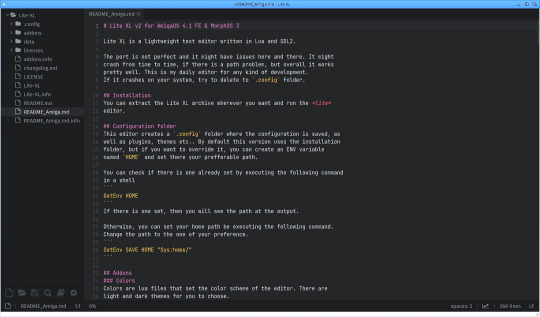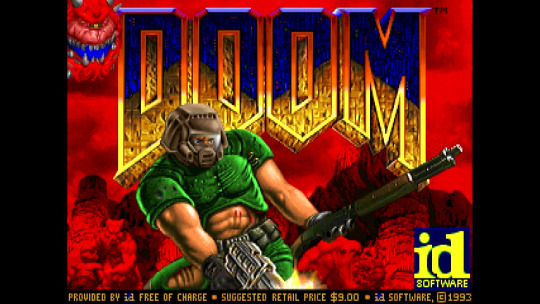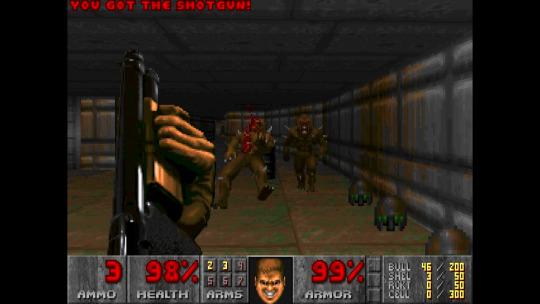#Amiga OS4
Explore tagged Tumblr posts
Text

Protrekkr 2.6.7 - A hybrid of modern day audio software and old-school styles of music tracker
#retro#tracker#music#player#tool#ProTrekkr#software#samples#electronic music#MorphOS#Windows#Linux#FreeBSD#NetBSD#Amiga OS4#AROS#Mac OSX#Haiku OS
9 notes
·
View notes
Text
Fuck me. KSP2 is the Amiga OS4 of games
This topic was set at 2024-05-26 11:03:29
0 notes
Text
Linux Life Episode 44

Hello folks and welcome back to the world of Linux Life. So since my last episode I have been once again playing with the emulator QEMU. I last looked at this in episodes 36 and 37.
Once again I have installed the Mac OS9 setup and the Amiga OS 4 back to the desktop. However the latest thing I am running using the QEMU system is I now have Mac OS X High Sierra running.
I did not even know this was possible but thanks to an article by Jason Graves (https://collaboradev.com/2018/10/19/arch-linux-running-osx-high-sierra-in-qemu/). I was able to get Mac OS X running. It has even managed to update to the latest version of High Sierra (10.13.6) and I am currently typing this episode using WriteRoom 3 in the emulation.
It is strange how I have taken to using minimalist word processing systems. To be honest WriteRoom was one of the first I ever used and kind of fell in love with it.
I had a G3 and the people at MacHeist had a NanoBundle giveaway for free to celebrate NaNoWritMo (a short novel thing held I think every November) in which you try and write an entire novel/short novella in 30 days.
Hence the Capitalisation it stands for National November Writing Month if I remember correctly. Anyway one of the free programs was WriteRoom 2.0 along with several other apps.
However upon using WriteRoom I was hooked. It seemed I wrote an awful lot more when in a minimalist word processor, whereas if you put in something like Microsoft Office I would stare blankly at the white screen.
I think it was because the screen config was setup like an old green screen monitor which reminded me of using Locoscript on the old Amstrad PCW8256 I used to have and I spent hours typing stuff all now lost in the 3" disks of time which probably no longer exist.
Regardless of why I typed more, I seemed to spend hours typing in WriteRoom than I did any other system. Unfortunately the G3 died and went to the great techno bin after the mainboard (logic board) started failing.
So I went back to Windows machines (Stop spitting at the back I have told you before). To be honest I wanted another minimalist word processor but as WriteRoom is exclusively for the Mac I had to try and find an equivalent.
First was JDarkRoom a Java based system that looked the part but had some really quirky ways it handled its file operations so it was quickly thrown by the wayside. I tried a few others including one that included Mood music playing in the background as you typed which was a tad bizarre.
After a few attempts I was about to give up and emulate a Mac when I found Focuswriter by Graham Gott. It had themes and one of them is called Old School which is the same green screen look I was looking for.
I still use Focuswriter to this day as it is available for Windows, Mac OS and Linux. So when not using this emulation I am currently I still use Focuswriter to this day and normally type the episodes in it.
Wow that was a long meandering waffle. I actually paid for a license for Writeroom 3 as when I was using a Hackintosh with Snow Leopard many machine versions back. I wanted WriteRoom but version 2 had issues with the new Intel based system. So I could no longer use my free version on anything over Mac OS X 10.5.8. Which I did use on my G5 until it died and the G4 until I gave it to a friend.
WriteRoom 3 worked with Intel based Macintosh systems and it cost me all of $10 to get the key. So now I have a fully working version of WriteRoom whether I am using PPC Macs, Emulation of Mac OS X Intel based or if the day ever comes I own an actual Intel Mac.
Obviously I am yet to test QEMU with anything major in OS X after all it doesn't really have great monitor support. It has not got Metal or any of the OpenGL features. I think it is running in basic VESA display mode.
So running this word processor and maybe a few minor programs is about its limit. Which is fine as it means I can run WriteRoom again so I am more than happy.
I would experiment more with Amiga OS 4 as I have never really used it in any real capacity. I think I once got a version working in WinUAE (which uses QEMU code to do so) but to be honest it was a bit temperamental. Obviously I think the issue is because the likes of QEMU don't emulate OpenGL as I said earlier, limits its scope of use.
However I should be able to get things running in the Mac OS 9 QEMU as I don't think many games relied on OpenGL. I did get it running You Don't Know Jack (UK Edition) and that ran with no issues once I managed to get the display adapter to switch to 256 colours. It will do higher just to get that mode you had to add a QEMU driver somewhere.
I may have to see if I can play any other games. I think it's time to see if I can find a way to get a collection of SIT files across to it. Probably just make an ISO of them and then do install them that way.
Well, that's enough waffle for this episode... If you feel there is anything you would like me to try in Linux providing it's not overtly complicated feel free to make suggestions.
So until next time ... Take care.
0 notes
Text
The A1200 Reloaded: Back for the future?
Article written December 11th, 2017
Individual Computers, known for making great products like the ACA500, Competition Pro Retro or the Turbo Chameleon 64, is planning on making yet another “Reloaded“ product.
After the success of the C64 Reloaded, the A1200 Reloaded is now in its prototyping stages and should be making a debut in the coming years. However, just like with the C64R, I see a few problems that will keep non-hardcore Amiga fans from buying this.
To put it simply: the product comes with out a CPU, power supply, floppy drive (or GOTEK) and case. The wiki states that the board itself including an AGA chip, DVI-I Output and an RTG solution will be around 350€. Now remember, that’s almost 400€ for just a board that is not ready to use in any way.
The wiki recommends to get an ACA1221(ec) accelerator card which includes the 68ec020 processor at 25MHz and 16MB physical memory. This accelerator card costs 120€. Let’s add that to the price of the naked board and we got 470€.
Now, the power supply won’t be an issue, since you can use any “modern laptop power supply” according to the wiki page. And those are quite cheap on places like Amazon. However it does add to the price.
Of course you don’t want just a naked A1200 board with lots of cables hanging off of it. You want it housed in an original A1200 (or A500) case! Luckily those can be ordered again since a small company decided to create new ones from new molds! One of these costs 89€ plus shipping. So let’s add 90€ to our list and we got a total of 560€.
Now remember how it doesn’t come with any floppy drive? Amigastore.eu sells these for approx. 27€, a new GOTEK drive will cost you 33€. Since I like future-proof products, I go for the GOTEK and add that to the total.
Ladies and gentleman, you too can get a brand-spanking new Amiga 1200 Reloaded for only 593€ (shipping not included).
Come on, that’s ridiculous. Sure, there will be people who will take out their wallet right now and throw 600€ at the screen, yelling GIMME GIMME GIMME! I mean hey, if you got money to throw away, go right ahead!
And again this product isn’t future-proof, just like the A-EON “AmigaONE”. It uses original AGA chips and original processors which will also be just sold out at some point in the future. And then? We can’t just make new AGA chips or new 680xx processors (not that easily, anyhow).
Just like with the A-EON products, I see no future for this and I'm quite disappointed. I still stand by my opinion that emulation in any way is the way forward. Perhaps with a Raspberry Pi-type machine, running OS4 (or an Intel-based one, since I’m not sure if OS4 will even run on ARM devices).
That’s just my two cents on this. Let me know what you guys think! Even if we don’t agree it can still spark a conversation and we might come up with some new ideas!
0 notes
Text

DonkeyKong - LCD game conversion for WarpUP, OS3, OS4, MorphOS and Aros
#commodore#retro#amiga#vintage#classic#retrogaming#videogames#lcd#conversion#game#os4#os3#amigaos#ppc
24 notes
·
View notes
Text

Runaway - LCD game conversion for WarpUP, OS3, OS4, MorphOS and Aros
13 notes
·
View notes
Text


GB/GBC/GBA Emulator VisualBoyAdvance v1.8.0 for AmigaOS4.1
7 notes
·
View notes
Photo

AmigaOS 4.1 - MilkyTracker 1.03
#commodore#amiga#retro#retrocomputing#classic#vintage#amigaos#computer#cbm#homecomputer#ng#os4#music
20 notes
·
View notes
Text

Lite XL 2.1.4r1, a lightweight text editor for AmigaOS 4.1 FE & MorphOS 3
2 notes
·
View notes
Text


AmigaOS 4 - Woof v1.417
4 notes
·
View notes
Text


AmigaOS4 - Breakhack a small roguelike game
4 notes
·
View notes
Photo

AmigaOS 4.1 - AmigaAMP3 3.32
#amiga#retro#retrocomputing#classic#vintage#amigaos#computer#cbm#homecomputer#ppc#audio#music#mp3#os4
16 notes
·
View notes
Photo


Augustus - Open Source Enhanced port of Caesar III for AmigaOS 4
7 notes
·
View notes
Photo

Milkytracker v1.03.01 - An FT2 compatible music tracker - For Amiga platforms (OS3.x, OS4.x, WarpOS, MorphOS, AROS)
9 notes
·
View notes
Photo

Hivelytracker 1.9 Released! (Windows/AmigaOS4)
4 notes
·
View notes
Photo


AmigaOS 4.1 - Wet Update 6.8
4 notes
·
View notes